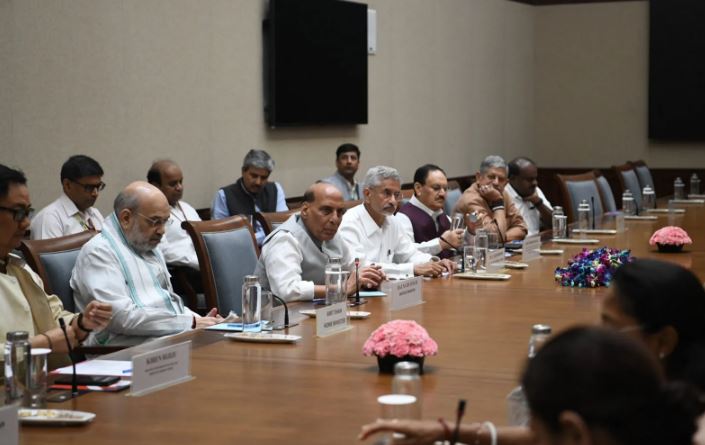India’s Strategic Response: Balancing Vigilance and Diplomacy
In light of the escalating crisis in Bangladesh, India is adopting a cautious yet vigilant approach. External Affairs Minister S. Jaishankar, during an all-party meeting in Parliament, outlined India’s strategy amidst the turbulence. As Bangladesh Prime Minister Sheikh Hasina resigns and seeks refuge following a deadly crackdown on protests, India’s response is characterized by a wait-and-watch stance, with the military on high alert. This approach reflects a strategic balance between proactive monitoring and diplomatic engagement, aimed at mitigating potential repercussions for India while navigating the complex geopolitical landscape.
Current Developments and Diplomatic Maneuvers
The recent upheaval in Bangladesh has precipitated significant concerns in New Delhi. External Affairs Minister Jaishankar informed attendees of the all-party meeting that while India is closely monitoring the situation, detailed insights into Sheikh Hasina’s plans or the involvement of external actors remain undisclosed. When questioned by Rahul Gandhi, Leader of Opposition in the Lok Sabha, about possible foreign interference, Jaishankar revealed that the Indian government had noted a change in the diplomatic profile of a Pakistani diplomat, indicating support for the unrest. However, no concrete evidence of direct external intervention was provided.
Jaishankar also suggested the potential formation of an interim government in Bangladesh, a development that could further influence regional stability. This scenario, while not confirmed, adds a layer of complexity to India’s strategic calculations. The Indian government is prepared to adapt its approach based on evolving circumstances, ensuring that any necessary measures are in place to safeguard national interests.
Opposition Unity and Governmental Preparedness
The all-party meeting, which included key opposition figures such as K.C. Venugopal, T.R. Baalu, and Ram Gopal Yadav, demonstrated a rare moment of political unity in India’s response to external crises. Despite varying political affiliations, the opposition leaders expressed their support for the government’s handling of the situation. This consensus underscores the gravity of the situation and the collective commitment to national security and stability.
Jaishankar’s briefing also highlighted that India is maintaining active communication with the Bangladesh Army while keeping its own military on high alert. The Indian Army is prepared to respond to any security challenges arising from the crisis. This readiness is part of a broader strategy to ensure the safety and security of India’s borders, as well as to address any potential influx of refugees or other related issues.
Key Takeaways and Strategic Implications
India’s current strategy reflects a nuanced approach to a rapidly evolving situation. The government’s focus on vigilance, combined with diplomatic engagement, aims to mitigate risks while preparing for various contingencies. The situation in Bangladesh remains fluid, and India’s ability to adapt to new developments will be crucial in maintaining regional stability and protecting its national interests.
Summary
India is adopting a cautious approach to the Bangladesh crisis, with its military on alert and diplomatic efforts underway. The government is closely monitoring the situation and preparing for potential developments.
Soumya Smruti Sahoo is a seasoned journalist with extensive experience in both international and Indian news writing. With a sharp analytical mind and a dedication to uncovering the truth, Soumya has built a reputation for delivering in-depth, well-researched articles that provide readers with a clear understanding of complex global and domestic issues. Her work reflects a deep commitment to journalistic integrity, making her a trusted source for accurate and insightful news coverage.



